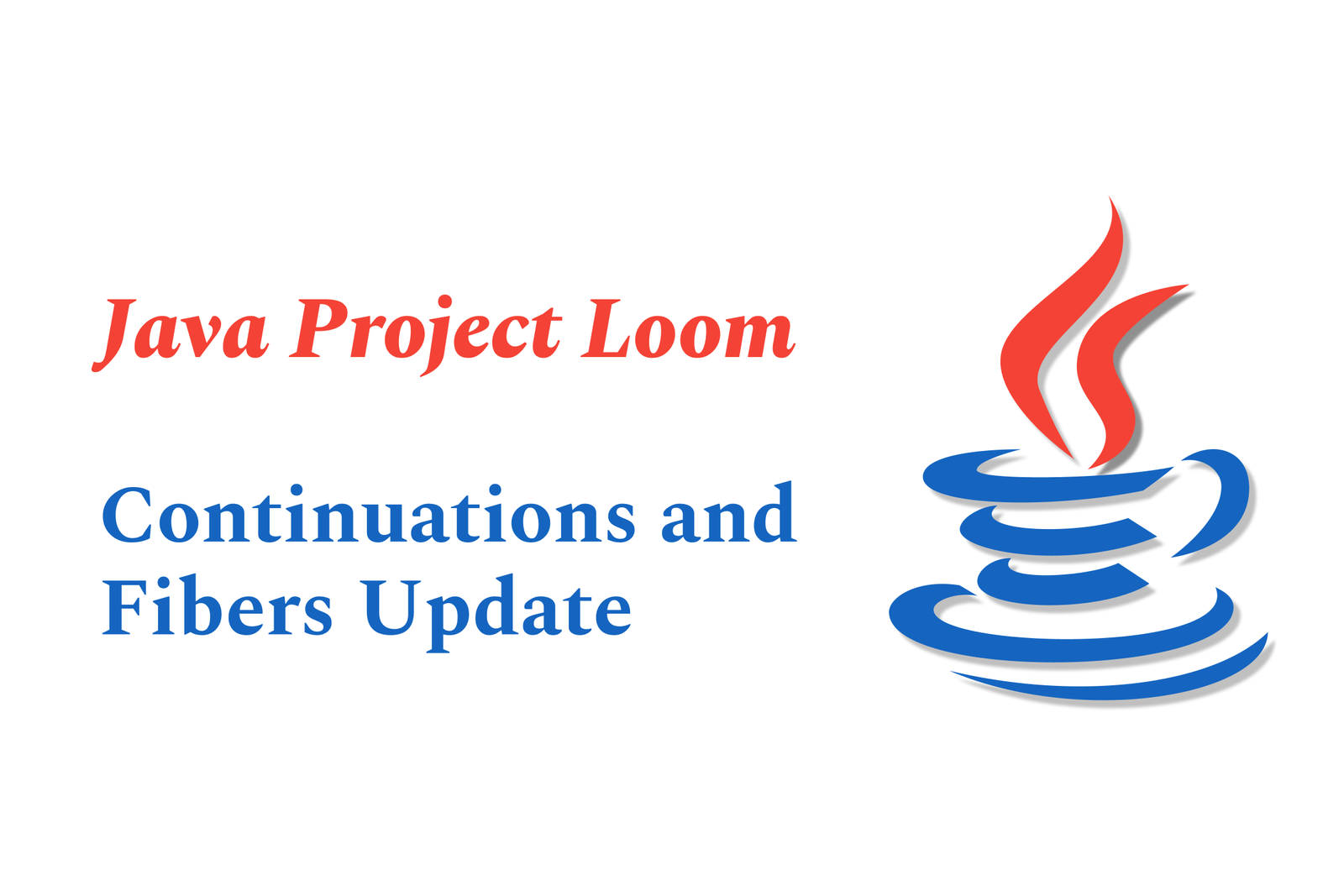Java Project Loom: continuations and fibers update
Java Project Loom introduces lightweight virtual threads called fibers, enabled by continuations, to simplify concurrency in Java. It allows millions of efficient, easy-to-use threads managed by the JVM, enhancing scalability and performance without complex async code changes.
Java Project Loom: Continuations and Fibers Update
1 ) Overview of Project Loom
Project Loom aims to simplify concurrent programming in Java by introducing lightweight threads called fibers. Unlike traditional Java threads, which map to heavyweight OS kernel threads, fibers are managed by the JVM itself, leading to better performance and reduced resource consumption. Fibers are implemented using two core components: continuations (to capture and switch execution states) and a scheduler. Java’s existing ForkJoinPool serves as an effective scheduler, with continuations facilitating the fiber implementation.
2 ) Motivation Behind Project Loom
Java applications frequently require handling vast numbers of concurrent tasks, such as in servers and databases. Traditional Java threads are limited by the OS's thread capacity—handling thousands but not millions of concurrent tasks efficiently, especially in cloud environments where resources are precious. This limitation forces developers either to write complex asynchronous, non blocking code or to compromise scalability. Current asynchronous APIs in Java, while solving resource issues, introduce complexity, harder debugging, less elegant composition, and poor ecosystem integration. Project Loom intends to restore the simplicity of thread based concurrency without sacrificing efficiency.
3 ) Key Features and Benefits
Fibers: Lightweight virtual threads with minimal memory footprint and near zero context switching overhead.
Continuations: Low level JVM features allowing execution states to be saved and resumed, enabling fibers.
Backward Compatibility: Fibers coexist with existing heavyweight threads, allowing gradual adoption.
Simplified Concurrency: Blocking calls (e.g., Thread.sleep(), socket I/O) become non blocking within fibers without changing method signatures or requiring special annotations.
Cloud Efficiency: Millions of fibers can be spawned and managed efficiently, reducing cloud computing costs.
4 ) Impact on Java Ecosystem and Other JVM Languages
Loom’s continuations and fibers bring coroutine like features to the JVM, offering native lightweight concurrency.
Unlike Kotlin coroutines, which are implemented via Continuation Passing Style (CPS), Project Loom’s fibers use continuations directly in the JVM, allowing potentially smoother integration but also posing interoperability challenges.
Discussions indicate possibilities for Kotlin coroutines to leverage Loom’s features, particularly automatic suspension of blocking calls, although full integration or reimplementation atop fibers remains speculative.
Structured concurrency is planned but considered by some as an imperative solution that may add complexity.
5 ) Additional Features in Project Loom
Delimited Continuations: Enable flexible control flow by saving/restoring execution points, more powerful than typical coroutine implementations.
Tail Call Elimination: Support for efficient recursion by allowing certain tail calls to avoid building new stack frames, improving performance and enabling new language idioms. However, automatic tail call optimization is not the primary goal.
6 ) Current Status and Future Outlook
Initial features like virtual threads have been introduced (e.g., in JDK 19 ), enabling blocking calls to release OS threads efficiently.
The project is still evolving, with no fixed release schedule; new concurrency APIs continue to be designed and refined based on community feedback.
The community is actively discussing Loom's design, potential impacts, and integration with existing JVM features and languages.
Summary:
Java Project Loom revolutionizes concurrency in the Java ecosystem by introducing JVM managed lightweight threads (fibers) and continuations, delivering scalable, efficient, and simpler concurrent programming. It restores natural thread based models without sacrificing performance or scalability and offers promising interoperability prospects for JVM languages like Kotlin. With Project Loom, Java is poised to meet modern demands for high throughput concurrency, especially in cloud native applications.
https://justacademy.in/news-detail/xcode-16.3-released:-new-tools-and-features-for-ios-devs
https://justacademy.in/news-detail/why-react-native-is-the-go-to-for-gaming-apps-in-2025
https://justacademy.in/news-detail/react-native's-latest-improvements-to-battery-efficiency
https://justacademy.in/news-detail/flutter-for-logistics-and-delivery-apps
https://justacademy.in/news-detail/why-react-native-developers-are-making-20%-more-in-2025
Related Posts
In 2025, top Angular libraries offer modern, feature-rich components and tools for building dynamic web apps. From powerful data grids to low-code platforms like UI Bakery, these libraries enhance development speed, UI design, and scalability, making them essential for Angular developers.
Migrating from AngularJS to Angular 17 involves gradually upgrading your app by running both frameworks together using tools like ngUpgrade, rewriting components in TypeScript, and adopting Angular’s modern architecture to enhance performance, maintainability, and long-term support.
Angular state management tools help organize and handle app data efficiently, improving scalability and maintainability. Popular options include NgRx for robust, RxJS-based patterns, and newer Signal Store solutions that offer simpler, reactive approaches integrated tightly with Angular’s latest features.
RxJS in Angular empowers developers to manage asynchronous data streams with powerful operators like `forkJoin`, `combineLatest`, and `zip`. Mastering these key operators in 2025 is essential for building efficient, reactive applications that handle complex event sequences seamlessly.
Angular performance optimization in 2025 focuses on improving app speed and responsiveness by using techniques like OnPush change detection, lazy loading, efficient data caching, and AOT compilation. These practices reduce load times, enhance user experience, and ensure scalable, fast Angular applications.
In 2025, Angular remains preferred for large-scale, enterprise apps with its robust, all-in-one framework, while Vue attracts developers seeking simplicity and fast development for smaller projects. Both frameworks excel, with choice driven by project needs and team expertise.
Angular Signals are a new reactive primitive in Angular 16 that enable fine-grained, efficient change detection by automatically tracking dependencies and updating only affected parts of the UI. They simplify state management and boost app performance, revolutionizing Angular's reactivity model.
Angular interview questions to prepare in 2025 focus on core concepts like components, directives, data binding, routing, and dependency injection, along with TypeScript mastery and latest Angular features to ensure strong practical knowledge for building scalable, efficient web applications.
AngularJS reached its official end of support in January 2022, meaning no further updates or security patches. To ensure app security and performance, developers should consider migrating to modern Angular versions or seek third-party long-term support options if immediate migration isn’t possible.
The Angular Roadmap 2025 highlights upcoming features focused on improving developer experience and performance, including zoneless Angular, Signals integration, enhanced Forms, async data handling, improved HMR, and expanded Angular Material/CDK enhancements, driving modern, efficient web app development.










